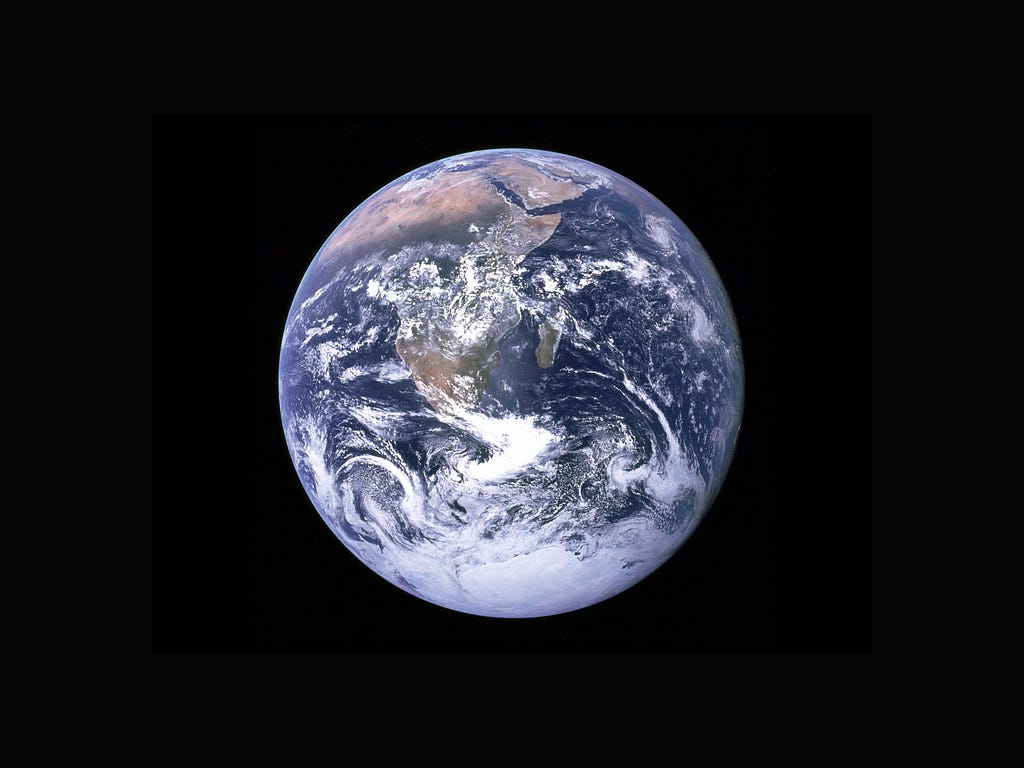
Inspiring climate action through fiction Photo by NASA on Unsplash
Photo by NASA on Unsplash
Our world is changing. It’s changing because we’ve failed to act on the climate crisis, despite decades of warnings. It’s changing because of decades of political deadlock and denial. It’s changing because the media hasn’t treated the climate emergency like the crisis it is. The irony is that if we refuse to change our behavior at this late stage, then our behavior will be changed by the climate crisis.
Many people credit Dr. James Hansen’s testimony to the US Congress in 1988, as the moment when the world first woke up to the climate crisis. Since then, 33 years have elapsed. We’re coming up to the 26th COP (Conference of the Parties), which was created to implement targets and action to address the climate emergency. Yet meaningful action still hasn’t happened, despite the fact that the science has never been clearer or starker.
In trying to overcome this inertia, we need to look at new methods of communication. In particular, we need to consider stories and storytelling. Stories have played a fundamental role in human evolution. Walter Fisher went as far as labeling us as “Homo narrans” or creatures of story. In The Storytelling Animal, Jonathan Gottschall prefers the phrase “Homo fictus” or fiction man, “The great ape with the storytelling mind.” But despite our predisposition towards stories, the canon of climate change stories is nowhere near deep or wide enough.
Cli-fi and why it matters
Cli-fi is a term coined by Dan Bloom. It stands for ‘climate fiction’, a new subgenre of literary fiction. According to research by Adam Trexler, there are around 150 works of cli-fi. However, the estimate included books that were not necessarily related to anthropogenic climate change and the research was also published in 2015. So this number is likely to have changed.
In 21 Lessons for the 21st Century, Yuval Noah Harari says that, “Art plays a key role in shaping people’s view of the world, and in the twenty-first-century science fiction is arguably the most important genre of all, for it shapes how most people understand things like AI, bioengineering and climate change.” If this is indeed the case, then there is considerable space for more novels in the cli-fi subgenre. In addition, there is also a necessity for more stories, because they can shape how we see the world and how we behave.
Authors can therefore be a major part of the climate solution. But they may wonder where to begin and how to go about writing cli-fi. So I’ve condensed a set of ideas into seven practical tips below. These are by no means the only ones to follow, and it’s not my intention to create a single homogenous canon of literature. In this sense, these ideas aren’t prescriptive, but rather suggestions for trying to educate, engage and bring about climate action.
Here are seven tips for writing cli-fi.
1. Ground the story in the present
Many books in the cli-fi cannon are dystopian and feature bleak scenarios. This is understandable given the concerns about runaway climate change. However, this carries with it the risk of creating a sense of apathy about the climate crisis, which in turn steers people away from focusing on solutions. As such, grounding a story in the here and now enables the reader to see what’s going on while we still have time to act.
2. Use plot or themes to interweave climate change into a story
A film like The Day After Tomorrow is a good example of a plot-driven story about climate change (albeit scientifically inaccurate on many accounts). Another way to interweave climate change into a story is through themes. A theme is more subtle and could focus on one or more components of the climate crisis.
3. Write strong characters
Characters are at the heart of any good story. Ensure you create rounded and believable characters who feel as real as the people you come across in everyday life. Characters enable readers to live vicariously and empathize with their predicaments. This is one of the major areas where a cli-fi book can pack more emotional punch than a non-fiction climate science book. To ignore this point is to forgo the opportunity of creating a world-changing story.
4. Write for your target audience
What age group is your book for? Are the language and content appropriate for them? Will it also fall under a larger genre, such as romance, adventure, crime, thriller etc.? Research what your target audience reads and analyze effective writing styles.
5. Use setting to help tell the story
If you’re trying to highlight the impacts of the climate crisis, then the setting in which the story takes place will be of importance. The polar regions, the rainforests, the coral reefs, low-lying cities and many other places are at risk from climate change and may show your reader the real-world impacts of the climate emergency.
6. Communicate science in a readable way
Cli-fi authors can be science communicators. There is no shortage of science to inform your work, the most recent IPCC report had 14,000 references. But how you choose to use the science matters. If it’s dumped in, you’ll lose the reader. Remember you’re writing a story first, and communicating science second. Maybe the science can inform how your characters behave, the events they attend or the conversations they have. Maybe it can influence your setting and the events that transpire there. You can use it subtly or overtly. However you chose to utilize the science, it’s important not to let it overwhelm your story and lose the reader’s attention.
7. Show climate solutions
Many of the dystopian cli-fi books on the market are set in a radically changed world. But one potential issue with such a setting is that it may create a sense of apathy as previously mentioned, especially if ideas aren’t presented for how to avoid such a future from unfolding. Cli-fi can provide hope by showing what actions people can take now to help address the climate crisis. Many people will learn about climate change through cli-fi books and authors have a golden opportunity to present them with solutions and ideas.
A new wave of cli-fi
Given the low number of books in this subgenre, I believe there is scope for a new wave of cli-fi. There are already some books being published that have the potential to bring about change. The example I’d like to talk about is the best cli-fi book I’ve read and one of my favorite books of all time; The Last Bear by Hannah Gold.
In The Last Bear, April Wood and her meteorologist father travel to Bear Island in the Arctic Circle, as her father is sent there to run a weather station. The island used to be home to many bears, but due to the disappearance of Arctic sea ice as a result of climate change, no bears remain. Except for one. Readers follow the heartbreakingly beautiful friendship between April and Bear, in what has been described as “a battle cry for our planet”.
It is for all intents and purposes a masterclass in how to write engaging cli-fi which is grounded in the present with science behind it, and cli-fi authors would do well to read it. But more than that, it’s a page-turning classic, that has love, connection and compassion at its core. Books like The Last Bear are the kind of cli-fi books that can ultimately change the world because they capture the human condition and resonate with each of us.
As authors we have a responsibility to try and make a difference while we still have time to act on the climate crisis. We have one of the most powerful tools at our disposal — the power to influence the way people think and behave. It’s time cli-fi wakes people up to the crisis. It’s time authors, agents and publishers take cli-fi seriously. It’s time to write like our lives depend on it, because with the direction we’re heading in, that may just be the case.
Ryan Mizzen is an Author and Freelance Writer. The new cli-fi children’s picture book in his ‘Time to Care’ series is Nanook and the Melting Arctic, which seeks to introduce the topic of climate change to 5–7 year olds in a fun rhyming text. Nanook and the Melting Arctic can be purchased from Amazon’s global stores, including Amazon US and Amazon UK now.
Changing the World Through Stories: 7 Tips for Writing Cli-Fi was originally published in The Writing Cooperative on Medium, where people are continuing the conversation by highlighting and responding to this story.
Read more: writingcooperative.com

